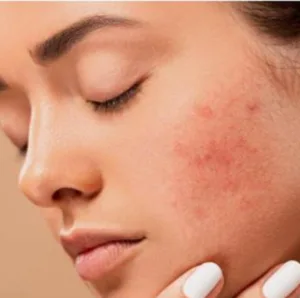Knowledge sharing
How Moisturizing Creams Combat Dryness and Skin Irritations
Dry skin happens when your skin loses moisture or oils. Learn how Moisturizing Creams combat dryness, soothe irritation, and support healthy, hydrated skin.
Other causes include aging, frequent hot showers, harsh soaps, low humidity, and dehydration. When the skin becomes dry, it can feel tight, itchy, flaky, and more prone to irritation or even cracking.
That’s why moisturizing creams are essential — they hydrate, repair the skin barrier, and help prevent further moisture loss, keeping your skin soft, healthy, and protected.
In this article, we’ll explore what causes dry skin, how moisturizing creams help relieve symptoms, their role in soothing irritated skin, the differences between day and night moisturizers, and how to choose the best one for your specific needs.

What Causes Dry Skin?
Dry skin, or xerosis, occurs when the skin lacks enough water or natural oils to maintain its barrier function. This condition can be temporary, such as during winter, or chronic, often linked to underlying skin issues like eczema or psoriasis.
Common causes of dry skin include:
Environmental Factors: Cold weather, wind, and low humidity levels can strip the skin of its natural moisture.
Hot Showers and Harsh Soaps: Prolonged exposure to hot water and harsh cleansing agents can remove the skin’s natural oils.
Aging: As we age, the skin produces less oil, leading to increased dryness.
Medical Conditions: Conditions like diabetes, hypothyroidism, or atopic dermatitis can contribute to persistent dryness.
Dehydration: Insufficient water intake affects skin hydration from the inside out.
Understanding these causes helps highlight the importance of moisturizing creams in daily skincare routines.
How Moisturizing Creams Help Combat Dryness
Moisturizing creams are specially formulated to address dry skin by targeting three primary functions: hydrating, sealing, and repairing.
1. Hydration
The main role of moisturizing creams is to provide water to the outermost layer of the skin, the stratum corneum. Ingredients such as glycerin, hyaluronic acid, and aloe vera attract moisture from the environment or deeper skin layers, keeping the skin plump and hydrated.
2. Sealing in Moisture
Moisturizers contain occlusives like petrolatum, lanolin, and shea butter. These ingredients form a barrier on the skin surface, preventing water loss and keeping hydration locked in for longer periods.
3. Repairing the Skin Barrier
Ceramides, fatty acids, and cholesterol are often included in high-quality moisturizing creams to help restore the skin’s lipid barrier. A healthy barrier not only reduces water loss but also protects against irritants, allergens, and bacteria.
By combining these elements, moisturizing creams address both the symptoms and root causes of dry skin, providing long-lasting relief and improving overall skin health.

Moisturizing Creams for Soothing Skin Irritations
In addition to dryness, many people struggle with redness, itching, and inflammation. Skin irritation can stem from allergies, harsh skincare products, sun exposure, or underlying conditions like rosacea or eczema. In these cases, moisturizing creams can be both protective and therapeutic.
How Moisturizing Creams Soothe Irritated Skin:
Anti-inflammatory Ingredients: Ingredients like colloidal oatmeal, aloe vera, and niacinamide are known for their calming properties, reducing redness and discomfort.
Barrier Repair: An irritated skin barrier is more vulnerable to infections and environmental stressors. Moisturizing creams help repair and strengthen this barrier.
Minimalist Formulas: For sensitive skin, moisturizing creams with minimal fragrance, alcohol, or preservatives reduce the risk of further irritation.
Using a gentle and effective moisturizing cream can dramatically improve the condition of irritated skin, promoting faster recovery and greater comfort.
Day vs. Night Moisturizing Creams: What’s the Difference?
While it might be tempting to use the same product for both day and night,
are often specially formulated for different times of day to maximize their benefits.
Day Moisturizers
Daytime moisturizing creams are typically lighter in texture to work well under makeup and prevent a greasy appearance. They often contain:
SPF for sun protection
Antioxidants like vitamin C to combat environmental stress
Hydrating agents for all-day moisture
These creams are designed to protect the skin from daily aggressors such as UV rays, pollution, and weather changes.
Night Moisturizers
Nighttime moisturizing creams tend to be richer and more nourishing. During sleep, the skin enters a regenerative phase, making it the perfect time to deliver active ingredients such as:
Peptides to support skin renewal
Retinol for anti-aging benefits (in appropriate formulations)
Ceramides and emollients to deeply hydrate and repair
Using separate day and night moisturizing creams ensures your skin receives the right care at the right time, enhancing overall skin health and appearance.

Choosing the Right Moisturizer for Dry Skin Conditions
With so many products on the market, choosing the best moisturizing cream can be overwhelming. The key is to understand your skin type, your environment, and any specific concerns you want to address.
1. Identify Your Skin Type
Even within the category of dry skin, there are variations:
Dry and Sensitive: Look for fragrance-free, hypoallergenic creams with soothing ingredients like chamomile or oat extract.
Dry and Flaky: Opt for creams rich in ceramides and lactic acid to gently exfoliate and restore the barrier.
Dry and Mature: Use anti-aging moisturizers containing peptides, hyaluronic acid, and nourishing oils.
2. Consider the Texture
The texture of moisturizing should match your comfort level and needs:
Creams: Thicker and richer, ideal for very dry skin or colder climates.
Lotions: Lighter and easier to spread, suitable for daily use in mild conditions.
Balms: Intensely emollient, best for spot treatments or severe dryness.
3. Check the Ingredient List
A good moisturizing cream for dry or irritated skin should include:
Humectants: Glycerin, hyaluronic acid
Occlusives: Petrolatum, dimethicone
Emollients: Shea butter, squalane
Soothing agents: Panthenol, allantoin
Barrier-repair ingredients: Ceramides, cholesterol, niacinamide
Avoid alcohol, synthetic fragrances, and harsh preservatives if you have sensitive or reactive skin.
Tips for Applying Moisturizing Creams Effectively
To get the most out of your moisturizing creams, it’s important not just to choose the right product, but also to apply it correctly. Here are some expert-backed tips to enhance effectiveness and ensure your skin stays healthy and hydrated:
Apply Immediately After Cleansing
The best time to apply moisturizer is right after washing your face or body, when your skin is still slightly damp. This helps trap the water on your skin, enhancing hydration and allowing the cream to absorb better. Waiting too long can lead to moisture evaporating before the cream is applied.Use Gentle, Upward Motions
Always apply moisturizing cream using light, upward strokes. Avoid tugging, pulling, or rubbing too hard — especially around sensitive areas like under the eyes or on irritated skin. Gentle application helps prevent unnecessary friction and protects the skin’s natural barrier.Layer If Needed
In drier climates or if your skin is severely dehydrated, you can layer products for better results. Start with a hydrating serum or essence, then seal in moisture with a richer moisturizing cream. This multi-step approach helps replenish water and lipids for longer-lasting comfort.Be Consistent
Consistency is key. Moisturizing once in a while won’t give long-term benefits. Make it a habit to apply moisturizing creams twice daily — in the morning to protect your skin throughout the day, and at night to support overnight repair.Don’t Forget Often-Ignored Areas
Many people focus only on the face, but areas like the neck, elbows, hands, knees, and even feet also need regular hydration. These zones are often exposed to the elements and can become dry and rough if neglected.Adjust Based on Skin Needs
Your skin’s moisture needs can change depending on the season, age, stress levels, or hormone changes. During colder months, opt for thicker creams, while in warmer months, a lighter formula may suffice. Pay attention to how your skin feels and adjust your routine accordingly.Choose the Right Amount
Using too little cream might not provide enough hydration, while using too much can clog pores or cause greasiness. A pea-sized amount is typically enough for the face, while more may be needed for larger body areas. Spread evenly without overloading.

